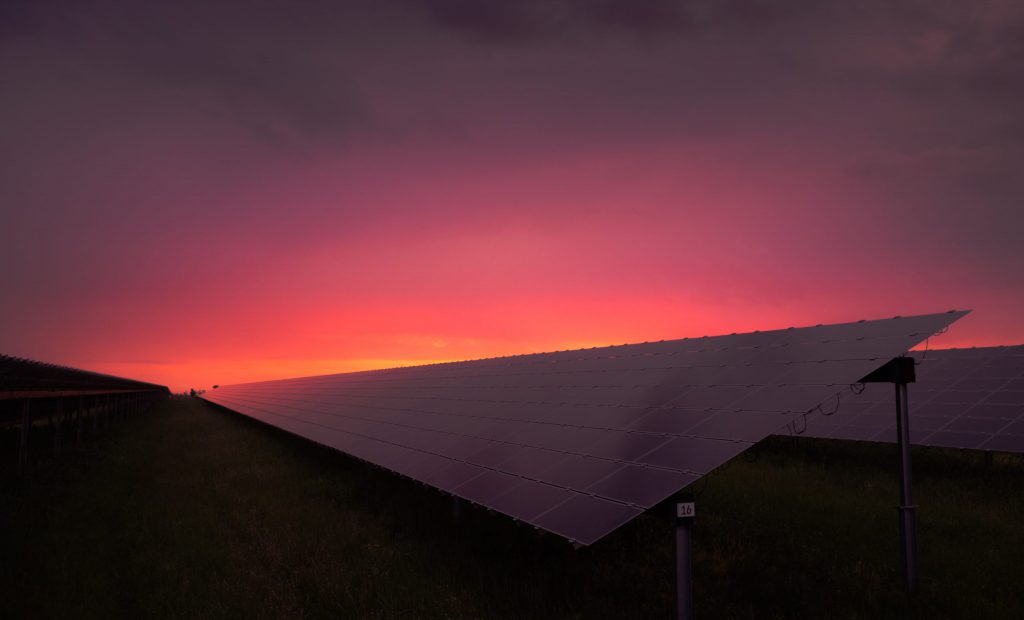What is a solar tracker, how does it work, and is it worth the extra cost?
Solar panels are pretty amazing. Transforming photons from the sun into energy we can use to power our homes, offices, even cars, is extremely impressive.
But for all the unbelievable feats of engineering that go into a solar panel, the basic concept does face a few key issues. Consider, for instance, the following 3 statements:
- Solar panels should be optimally placed to catch the sun’s rays.
- The sun moves across the sky from morning to night*
- Left on their own, solar panels stay right where they are.
See the problem?
When you go out tanning, you don’t choose the exact same orientation in the same spot every time. You shift based on where the sun is. Even plants figured out millions of years ago that bending toward the sun allowed them to get as much energy from it as they can. Solar panels should do the same.
Introducing: solar trackers.
*My elementary school teachers wouldn’t appreciate this phrasing, since of course it’s actually us that move. But I hope we’re all on the same page with the meat of the issue.
Table of Contents
What Is a Solar Tracker?
Solar tracking systems allow solar panels to follow the sun’s path as it moves from east to west. They improve solar panels’ exposure to sunlight and increase the amount of energy they produce by ensuring they face the sun for as much time as possible.
Without trackers, installers have to choose a single orientation to maximize the amount of sun solar panels can get. With solar trackers, a single panel can, for several extra hours a day, achieve the kind of efficiency that a fixed-tilt panel can only get at its peak.
The Pros of Solar Trackers
- By increasing exposure to the sun, solar trackers make solar panels 25-45% more productive. That maximizes savings for solar customers, increases returns for solar developers, and brings more clean energy to the grid.
- Since they capture more power per panel, solar trackers also reduce the amount of space needed to power a property or group of properties. A 1000-acre solar farm of fixed-tilt solar panels might only need to occupy 800 acres, if built with solar trackers, to supply the same amount of energy. That’s better for the environment, since it leaves a smaller footprint on the surrounding area. Likewise, a commercial building might not have enough space on its roof to cover its needs with fixed-tilt solar, but trackers can be the boost that empowers that building to cover its energy needs.
- Community solar projects using trackers can be a good alternative for folks whose roofs aren’t suited for solar and whose yards lack the space for a bigger solar array–and they’re great for developers looking to get the most out of the land they buy for solar.
With better economic returns and a better environmental outcome, there’s a lot to love about solar trackers. In fact, globally, over 85% of newly-built large-scale solar plants use trackers today to create more energy than they would without them.
The Cons of Solar Trackers
If solar trackers are so much more efficient than static solar panels, why aren’t people more familiar with them? Why aren’t they used all the time in the solar industry?
- Solar trackers are more complex to build and install than fixed-tilt panels, so they cost more up front and may take more time to give you a return on your investment. They are best suited for commercial and industrial applications or utility-scale projects. For instance, a typical homeowner thinking about installing 4kW of ground mounted solar (residential roofs usually can’t support the extra bolting required for weatherproof solar trackers), using trackers could increase the cost by as much as 50%. That extra cost often isn’t as cost-effective as, say, adding an extra panel or two.
- With many trackers on the market, complexity isn’t just a challenge during installation. It also ends up calling for more maintenance down the line for added parts.
- Added cost and complexity generally means it takes more panels to make trackers worth the investment. This makes them a better option for solar farms, usually, than for small-scale household installations.
Solar Trackers In Action: Solving the Cost & Complexity Problem
If solar trackers add cost and complexity, the key to improvement is to build cheap, easy-to-install and easy-to-maintain solar trackers.
That’s what inspired Sunfolding, a solar design and manufacture company based in California, to create their single-axis tracker. One-of-a-kind in solar, theirs reduces the amount of parts typically used in solar trackers from more than 20 to just 3 components, cutting installation times in half and making for easy long-term maintenance.
Sunfolding’s simpler design allows it to go where only fixed-tilt solar has gone before. For instance, simple solar trackers are better for small-scale solar farms and community solar projects that aren’t big enough to justify lots of extra complexity. They’re cost-effective for project sites that require tracker rows as small as 20 panels long, and can work on uneven terrain that would normally dissuade installers from using trackers at all.
![]()
Sunfolding’s solar tracker is air-driven, using bellows to shift solar panels from east to west.
Single-Axis vs. Double-Axis Trackers
Sunfolding uses a single-axis tracker, meaning it can shift along one plane of motion. However, there are also dual-axis trackers that can move along two planes (east-west and north-south), giving them a wider range of potential orientations toward the sun.
In most situations, dual-axis trackers aren’t necessary. Whereas single-axis trackers are 25-35% more efficient than static panels, dual-axis trackers only beat single-axis by an extra 10%, and with extra costs that can more than offset the gain in efficiency.
However, there are times when a double-axis tracker is worth the investment–for instance, when space is minimal. Consider using double-axis solar trackers if you’re working on a tight land space and are willing to pay more upfront to see better power in the future.
The other advantage of dual-axis trackers is their versatility when it comes to seasonal changes in the sun’s path. Since the earth rotates on an axis, the sun doesn’t rise and set in the same spot in the east or west every day. In fact, it can rise in a very different location during winter than it does during summer. At higher latitudes, the difference becomes much more pronounced.
With a dual-axis tracker, solar panels can adjust to those seasonal changes as well as daily changes to maximize efficiency all year round.
The Future of Solar Trackers
In the beginning, solar trackers were only practical for the biggest solar plants around. Today, they’re a part of almost every medium to big new plant. And in the future?
“Trackers have turned solar into a machine that’s alive, that can react to the environment,” says Sunfolding’s Gwen Rose. “We’re seeing just the beginning of it. You’re going to see we can do things that we can’t even imagine now.”
When it comes down to it, trackers just make sense. The sun moves, and solar panels should move with it. All that’s left is to improve their design so that they can be used on more and more local projects–especially more community solar farms. With that progress, we’ll be able to cut down American solar’s land imprint.
“Trackers are the infrastructure and the platform for solar,” says Rose. “There’s so much further to go.”



